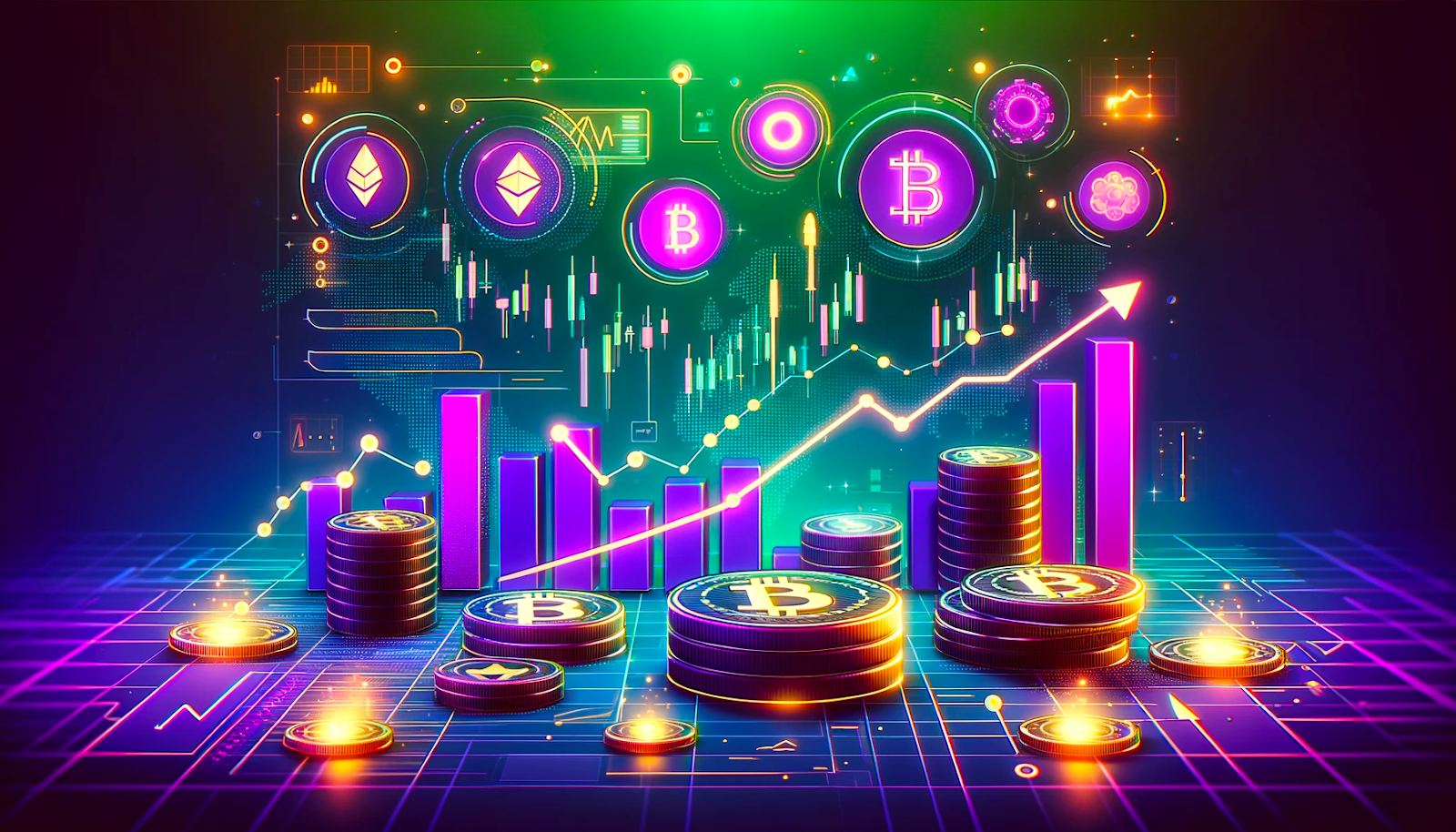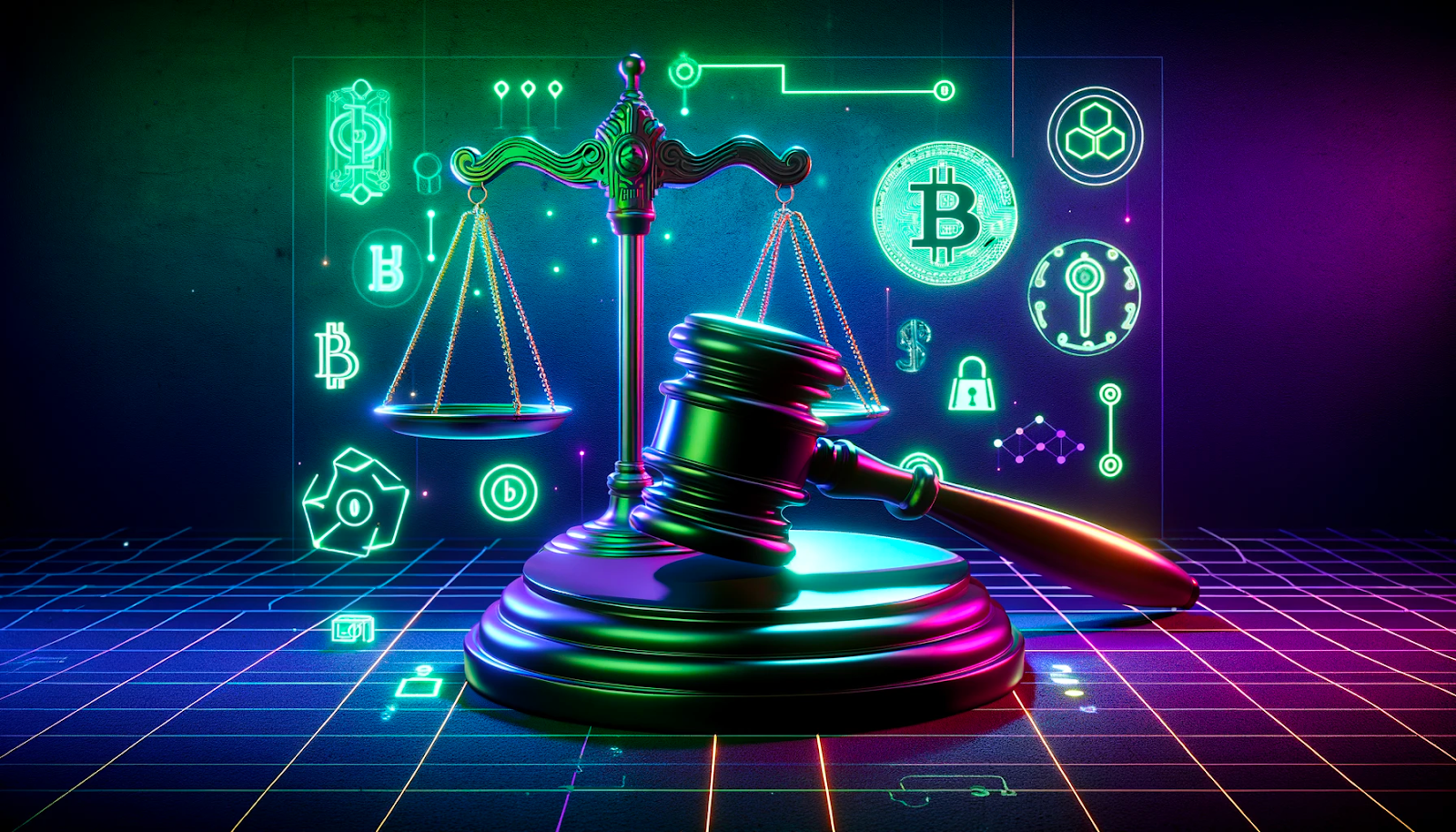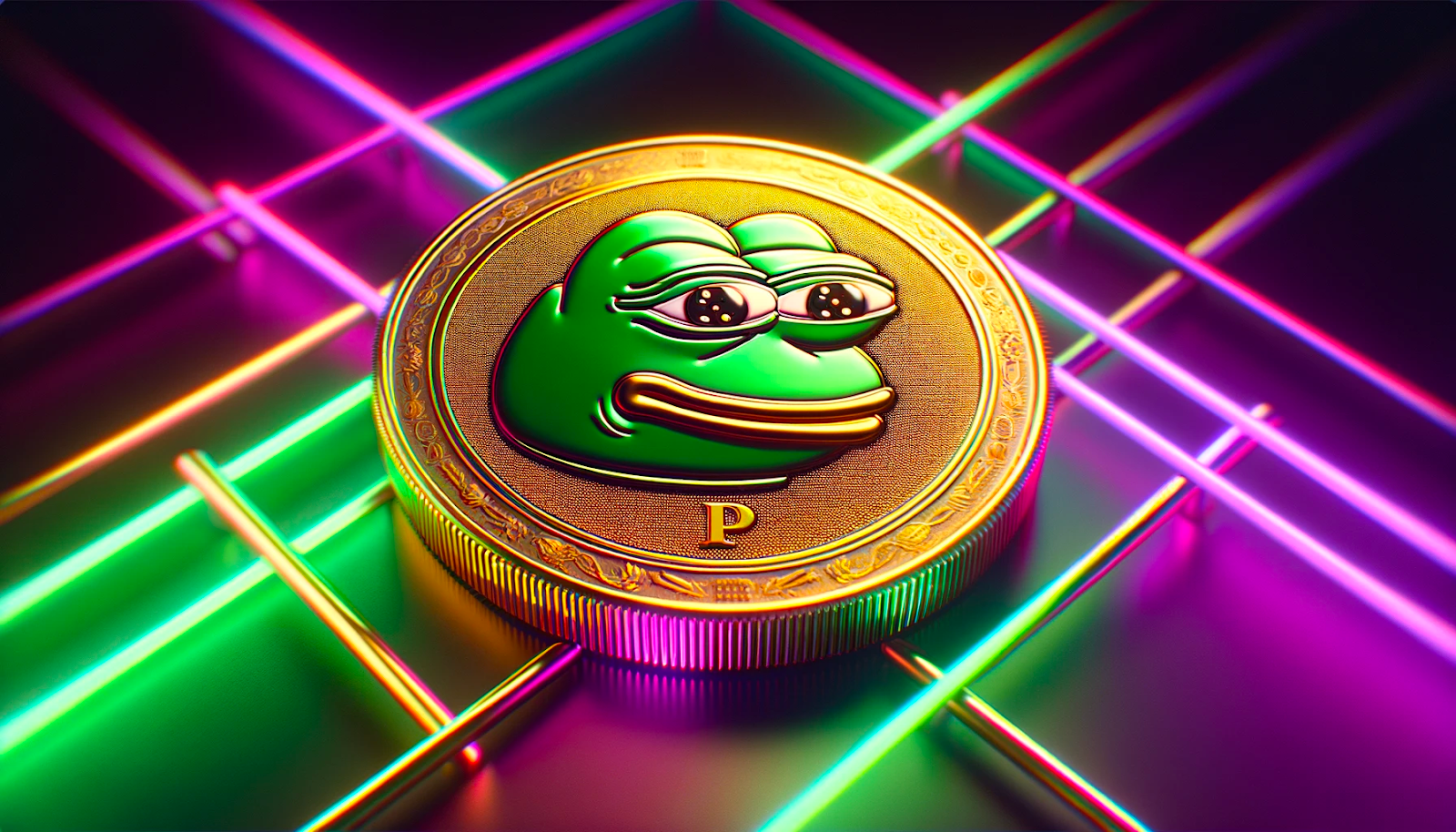
What are some commonly used phrases in cryptocurrency? If you haven't already checked out our previous cryptocurrency glossary (aka Jargon) with some more phrases check here.
A
Address
A unique string of characters, often numerically, represents a destination for cryptocurrency transactions, much like an email address but for digital cryptocurrency transactions.
Altcoin
Short for alternative coin, it refers to any cryptocurrency other than Bitcoin.
ASIC (Application-Specific Integrated Circuit)
A type of hardware used in cryptocurrency mining designed specifically for mining a particular cryptocurrency.
Atomic Swap
A technology that enables the exchange of one cryptocurrency for another without the need for a centralised intermediary, such as an exchange.
Airdrop
A free (in exchange for minimal work), distribution of cryptocurrency to multiple wallet addresses.
Algorithm
The set of rules defining how a cryptocurrency network operates, such as for validating transactions and mining new tokens.
ATH (All-Time High)
The highest price ever reached by a cryptocurrency.
ATL (All-Time Low)
The lowest price ever reached by a cryptocurrency.
Arbitrage
The buying and selling of the same asset in different markets to profit from price differences.
Anonymity
The feature of some cryptocurrencies that hide users' identities such as privacy coins.
B
Bitcoin
The first and most well-known cryptocurrency. Created by Satoshi Nakamoto.
Blockchain
A digital ledger where transactions made in cryptocurrency are recorded chronologically and publicly.
Block
A file storing data of numerous cryptocurrency transactions.
Block Reward
Mining a block in a blockchain results in the miner being rewarded an amount of cryptocurrency.
Bull Market
A market condition where prices rise or are expected to rise, the market is bullish.
Bear Market
A market condition where prices fall or are expected to fall, the market is bearish.
Binance
A centralised cryptocurrency exchange.
BIP (Bitcoin Improvement Proposal)
A design document for introducing new features or information to Bitcoin.
Blockchain Explorer
A tool to view all transactions on a blockchain.
C
Cryptocurrency
A digital currency that uses cryptography encryption algorithms to be used as a medium of exchange.
Consensus
Agreement in a network on the validity of transactions.
Cold Storage
Offline cryptocurrency storage, such as a ledger.
Coin
A unit of digital currency.
Confirmation
Verification of a cryptocurrency transaction.
Contract
A set of predefined rules that execute automatically.
Consensus Mechanism
A protocol through which a network reaches a consensus, in other words, a general agreement, outlining the terms and conditions on the network that every node and validator has to abide by.
Centralised Exchange
An exchange where a central authority has control.
Cryptography
The process of hiding information via encryption so only the intended recipient can read a message.
CBDC (Central Bank Digital Currency)
Not too different from traditional currency issued by a central bank, CBDC’s are a digital version of fiat currency, tied 1:1 ratio to fiat reserves.
D
Decentralised
The transfer of control and decision-making from a centralised authority to a distributed network where no single entity controls it.
DAO (Decentralised Autonomous Organisation)
An organisation that is represented by rules encoded as a computer program, a DAO is transparent and controlled by votes from the organisation's members.
dApp (Decentralised Application)
An application that runs on a decentralised network.
DeFi (Decentralised Finance)
Financial services such as lending, borrowing and trading through decentralised platforms.
Double Spending
A risk that a digital currency can be spent twice.
Distributed Ledger
A consensus of replicated, shared and synchronised digital data spread across multiple sites, countries or institutions.
Dusting Attack
A tactic where malicious actors send small amounts of cryptocurrency to wallets to breach the privacy of these wallets, having small amounts of cryptocurrency in different wallets gives them the ability to track that users' transactions.
Day Trading
The act of buying and selling cryptocurrency within a short window of time with the goal of making small profits that will eventually add up to big gains over time.
Diamond Hands
Often used to describe investors with a high-risk tolerance for holding cryptocurrencies, even during periods of high volatility.
DYOR (Do Your Own Research)
A disclaimer advising investors to research and analyse cryptocurrencies themselves before investing.
E
Ethereum
A decentralised platform that enables smart contracts and dApps to be built.
Exchange
A platform where cryptocurrencies are traded.
ERC-20
A standard used for creating and issuing new tokens on the Ethereum Blockchain.
Encryption
The process of converting information or data into a code, to prevent unauthorised access.
Escrow
A financial arrangement where a third party holds and regulates payment of the funds required for two parties involved in a given transaction.
EVM (Ethereum Virtual Machine)
EVM is a software that runs on the Ethereum blockchain and is responsible for executing smart contracts.
Exchange Rate
The value of one cryptocurrency conversion to another.
F
Fork
A change to the protocol of a blockchain network that results in two separate blockchains, one following the old rules, and one following the new rules.
Fiat
A government-issued currency.
FOMO (Fear of Missing Out)
The fear of missing out on an exciting or interesting event. This can be a cryptocurrency that has garnered a lot of attention so you buy a coin to avoid missing out on its potential profit.
FUD (Fear, Uncertainty and Doubt)
A strategy to influence the perception of a cryptocurrency by spreading negative, misleading or false information about a cryptocurrency.
Fungible
Assets that are interchangeable and have the same value.
Farming
Farming in DeFi refers to the practice of staking or locking up cryptocurrencies to receive rewards.
Faucet
A website that dispenses small amounts of cryptocurrencies for free or for performing simple tasks.
Flash Loan
A type of loan in DeFi that allows the borrowing of cryptocurrency for a very short period.
Futures Contract
An agreement to buy or sell a particular cryptocurrency at a predetermined price at a specified time in the future.
G
Gas
A unit that measures the amount of ETH required to execute operations on the Ethereum blockchain.
Genesis Block
The first block of a blockchain.
GPU (Graphics Processing Unit)
A specialised processor commonly used in cryptocurrency mining.
Gwei
A denomination of ETH used on the Ethereum blockchain, 1 Gwei = 0.000000001 ETH.
Governance Token
A token that grants holders the right to vote on changes to a cryptocurrency project or protocol.
Genesis NFT
The first or earliest issued non-fungible token of a project, often holding special value or utility.
Gary Gensler
The current chair of the SEC.
H
Halving
An event in some cryptocurrencies that cuts the block reward for mining in half, typically occurring at regular intervals. Bitcoin experiences a halving roughly every 4 years.
Hard Fork
A type of fork that creates a permanent divergence from the previous version of a blockchain, nodes running the previous version of the blockchain will no longer be compatible or accepted.
Hash Function
The process of transforming a string of characters or data into another value, usually a shorter, fixed-length value. Hash values are harder to decode and are often used for one-way encryption.
Hash Rate
The speed at which a computer completes an operation in the cryptocurrency network.
HODL
Originally a typo for hold, it refers to a buy-and-hold strategy. Hold on for dear life.
Hardware Wallet
A physical device that stores cryptocurrency offline, providing a form of cold storage. For example a ledger.
Hot Wallet
A cryptocurrency wallet that is connected to the internet and cryptocurrency network.
Hard Cap
The maximum limit on the total supply of a cryptocurrency.
I
ICO (Initial Coin Offering)
A fundraising method where new cryptocurrencies are sold to investors for the first time, it is usually a capital-raising activity.
Immutable
A characteristic of blockchains where once data has been written, it cannot be changed.
Interoperability
The ability of different blockchain networks to communicate and interact with each other.
Inflation
The decrease in the purchasing power of a currency.
J
John Bollinger
John Bollinger is an American financial analyst and author, best known for developing the Bollinger Bands technical indicator, it is used by asset traders to measure market volatility and can be applied to any time frame. John Bollinger’s work has helped shape modern technical analysis.
K
KYC (Know Your Customer)
A process that is done by a business to verify the identity of its clients. This usually requires uploading an ID and proof of address.
Key (Private/Public)
A string of characters used to send, receive or spend cryptocurrencies, private keys are known just to the user as access to their wallet, whilst public keys are shared a bit like an email address.
L
Ledger
A ledger is a record of transactions.
Layer 1
The underlying blockchain protocol that provides the foundation for the network and is responsible for the settling of transactions, Bitcoin is a layer 1.
Layer 2
A secondary protocol or framework built on top of an existing blockchain system, designed to help solve scalability and speed problems.
Liquidity
The ability of a cryptocurrency to be converted into stablecoins or other coins without impacting the market price significantly.
Leverage
Using borrowed capital to invest in cryptocurrencies, can range from 1x to 100x or more leverage.
Lightning Network
A second layer technology for Bitcoin that helps scale the capabilities of Bitcoin’s blockchain by using micropayment channels.
Limit Order
An order to buy or sell a cryptocurrency at a specific price.
Long Position
A long position is when a trader bets that a cryptocurrency price will increase.
M
Mining
The process of using computer hardware to do complex computations to help run and secure a network to earn new units of cryptocurrency as a reward.
Miner
An individual or a company that mines cryptocurrencies.
Market Cap
The total value of all coins of a particular cryptocurrency that has been mined. The market cap is calculated by multiplying the current number of coins by the current value of those coins.
Multi-Signature
A type of cryptocurrency wallet that requires two or more private keys to authorise a transaction.
Moon
A term used to describe a significant price increase of a cryptocurrency.
Mainnet
A fully developed and deployed version of a blockchain where all transactions are publicly broadcast on a digital ledger.
Masternode
A computer that keeps a full copy of the blockchain in real time and is always up and running to perform tasks for the network.
Memecoin
A type of cryptocurrency that originated from an internet meme or some other humorous characteristic, often meme coins have no serious purpose or use case.
N
Node
Any computer that connects to and works for a blockchain network. Nodes are essential for blockchain networks to function.
Non-Fungible Token
A type of digital token on a blockchain that usually represents a piece of art, music or video game items.
No-Coiner
A term used to describe someone who holds no cryptocurrency in their investment portfolio.
Network Fee
A fee that is paid to miners or validators to process transactions on a blockchain network.
Non-Custodial
Non-custodial means the keys to a wallet are held by the wallet owner and not an exchange or other entity.
NFA (Not Financial Advice)
Commonly used term within cryptocurrency, meaning the person sharing information is not responsible for what happens based on their advice.
NGMI (Not Gonna Make It)
A term used to mock individuals in the cryptocurrency space.
Nonce
A random number that can only be used in cryptographic communication, when miners validate a transaction, a nonce is created in the block as an authentication tool.
O
Oracles
Entities that connect blockchain systems to external systems. Oracles enable smart contracts to execute based on inputs from the outside world.
Open Source
The source code of a project or software is made freely available and may be redistributed and modified.
Order Book
A list of buy and sell orders on an exchange for a specific cryptocurrency.
Over-the-counter (OTC)
Trading is done directly between two parties, without the use of an exchange.
Off-chain
Anything that happens off the blockchain is off-chain. Data such as sports and weather that is external to a blockchain as blockchains are isolated systems.
Oversold
In a condition where a cryptocurrency has been sold off for an extended period, this asset value is perceived to be below its fair value.
P
Private Key
A secure alphanumeric code that enables a user to access their cryptocurrency wallet.
Public Key
A cryptographic code that allows users to receive cryptocurrencies into their wallet.
Proof-of-Work
A consensus mechanism that requires miners of a cryptocurrency network to solve complex mathematical problems to validate cryptocurrency transactions.
Proof-of-Stake
A consensus mechanism that requires token holders to stake their tokens, making them a validator, the token holder with their staked tokens then validates blocks for the network.
Proof-of-History
A consensus mechanism that encodes time onto the blockchain and hashes incoming events and transactions, this unique hash acts as a function of time enabling each block or transaction to be ordered correctly.
Peer-to-Peer
Two people interact directly without the need for a third party or intermediary.
Pump and Dump
A form of market manipulation in which an asset is artificially inflated or pumped to a high price and then sold off by the manipulators causing a dump.
Portfolio
A range of investments held by a person or organisation.
Protocol
A set of rules that define interactions on a network, typically involving the consensus mechanism, transaction validation and network participation on the blockchain.
Privacy Coins
Just like any other cryptocurrencies, privacy coins preserve the anonymity of the users, making it difficult for anyone to know who is conducting a transaction.
Paper Hands
Refers to someone who exits positions early due to worries surrounding that investment.
Ponzi Scheme
Where investors are lured in with the belief of the success of a protocol that does not exist, they generate returns for early investors with the returns from later investors.
Q
QR Code
A type of barcode representing data in a square grid can be used for storing wallet addresses, users can scan a QR code instead of entering the long wallet code.
R
Rekt
A term used for getting wrecked when trading, typically when a big loss occurs.
ROI (Return on Investment)
A measure used to evaluate the efficiency of an investment compared to other investments, the greater the ROI the better the investment.
Rug Pull
A type of scam where cryptocurrency developers abandon a project and run away with all the project's funds.
Regulation
The rules and laws governing cryptocurrency use. They vary from country to country.
Recovery Phrase
A series of 12 to 24 words generated by your cryptocurrency wallet that grant access to the cryptocurrency stored within.
Roadmap
A summary specifying a project's direction and plans.
S
SEC
The U.S. Securities and Exchange Commission.
Satoshi
The smallest denomination of a unit of Bitcoin, named after its creator Satoshi Nakamoto, one satoshi equals one hundred millionth of a Bitcoin.
Smart Contract
A self-executing contract with the terms of the agreement directly written into lines of code.
Staking
Staking involves locking up tokens to support the operations of a blockchain network and receiving a regular percentage of rewards for doing so.
Sharding
A method used for distributing data across multiple machines to improve the scalability of blockchain networks, sharding divides a large database into smaller, faster and more easily managed parts called data shards.
Shilling
In the act of promoting a cryptocurrency for personal gain, coins are shilled to maximise investment gains.
Soft Fork
A change to the software of a blockchain where only previously valid transactions are made invalid, requiring miners to upgrade their mining software.
Side Chain
A separate blockchain that works parallel to the main blockchain using a two-way peg, increasing transaction speeds.
Stablecoin
A type of cryptocurrency that is pegged to a stable asset, usually the dollar. Such as USDT or USDC.
Shitcoin
A type of project with no real use case or real-world value, such as meme coins.
Short Position
The act of placing a bet on the price of an asset to decrease.
Slippage
Slippage is the difference between the quoted trade price and the price at which an order is executed.
Spot Trading
The buying and selling of an asset which is settled at the current price, there is no use of leverage with spot trading.
Stop Loss
A trading tool used to exit a trade at a specified value to minimise potential losses. If the price drops to your stop loss value or below your asset will be sold.
T
Token
A digital asset that is digitally transferred and can be exchanged for another. Tokens offer functions that include utility, security and governance.
Testnet
An alternative blockchain that is used only for testing purposes.
Trustless
No central authority is in control.
Two-Factor Authentication
A method of security that requires two forms of authentication to access an exchange or wallet.
TPS (Transactions Per Second)
A measure of the number of transactions a blockchain network can process each second.
Tokenomics
Tokenomics refers to the overall economics of a cryptocurrency token, including maximum supply, circulating supply, distribution and incentive mechanism.
Transaction Fee
A fee that is paid to miners or validators for processing transactions on a blockchain network.
Token Standard
A standard by which all tokens must abide, each blockchain has its token standard, Ethereum has the ERC standard.
Trading Pair
A trading pair refers to two separate assets, such as the trading pairs BTC/USDT or ETH/USDT.
Trading Strategies
Trading strategies refer to how traders increase the probability of profits when trading by using different strategies to maximise profits.
TXID
Transaction ID which is a unique identifier that serves as a receipt for a blockchain transaction
Token Burn
A token burn refers to the deliberate and irreversible act of destroying a certain number of tokens or coins within a project's ecosystem.
The token burn process reduces the total supply of the token, making each remaining amount more scarce.
U
Unconfirmed Transaction
A cryptocurrency transaction that has been initiated by not yet recorded on the blockchain.
Uniswap
A decentralised finance protocol that is used to exchange cryptocurrencies.
UTXO (Unspent Transaction Output)
The amount of digital currency that someone has left remaining after executing cryptocurrency transactions.
V
Volatility
The measure of the variation of an asset price over time, the more volatile the asset is the greater the fluctuation. This is usually the case with newly created cryptocurrencies or in times of big news events.
Validator
A computer that is responsible for verifying and validating transactions before they are added to the blockchain.
Vesting Period
The restriction of the sale of a cryptocurrency for a predetermined period.
VPN
A Virtual Private Network provides an additional layer of security to a user, encrypting your IP address.
W
Wallet
A wallet enables a user to send, receive and store digital assets. Think of a wallet like a bank account.
Whale
Someone who owns a substantial amount of a cryptocurrency.
White Paper
A whitepaper is written by the founders of a project, containing information about the project, such as the technology, type of product being launched and other methodology.
WAGMI
Often used in the cryptocurrency ecosystem, it stands for We’re all gunna make it.
Whitelist
A list of addresses that have been shortlisted for a specific event such as a pre-sale or rights to mint an NFT first. Usually obtained through participating in the community of a cryptocurrency.
Wrapped Tokens
Wrapped tokens involve wrapping a cryptocurrency so it can be used on another blockchain other than the blockchain it was built on.
Web3
A term referring to the next generation of the internet with the introduction of blockchain technology and decentralisation.
Y
Yield Farming
The practice of staking or lending cryptocurrency in dApps to generate high returns or rewards through the use of smart contracts.
Z
Zero-Knowledge Proofs
A method in cryptography in which one party can prove to another party that they know a value, without conveying any information apart from the fact they know the value. Data is true without revealing any excess data.
Zombie Chain
A zombie chain is when a blockchain no longer has many users and its coin has little to no value.
Want More Cutting-Edge Crypto News?
Follow Us: X TikTok Instagram Telegram LinkedIn
Sign up to our newsletter at the bottom of the page
Check Out Our Top 10 Crypto Currencies of 2023
This article is intended for educational purposes and is not financial advice.

















